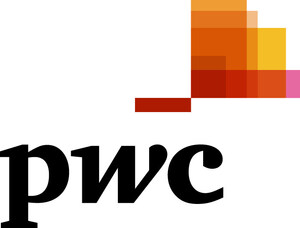NEW YORK, May 12, 2011 /PRNewswire/ -- The pace of mega deals in the engineering and construction industry increased in the first quarter of 2011, accounting for $13.6 billion, or 67 percent, of total deal value in the sector, according to Engineering growth, a quarterly analysis of merger and acquisition (M&A) activity in the global engineering and construction industry by PwC US. While small deals and deals with undisclosed value dominated sector activity during the first three months of 2011, there were four deals worth over $1 billion, double the number during the last quarter of 2010. Mega deal activity by investor group was split 50-50 between corporate and financial investors.
(Logo: http://photos.prnewswire.com/prnh/20100917/NY66894LOGO )
"The rise in mega deals in the first quarter illustrates buyers' increased confidence and ability to engage in larger deals. The number of mega deals is already on pace to meet or exceed strong growth levels seen in 2010," said H. Kent Goetjen, U.S. engineering and construction leader with PwC. "As the overall health of the economy improves, acquirers' balance sheets are strengthened, and capital markets gain confidence in engineering and construction companies, we anticipate this robust M&A activity to continue to grow both in value and in volume of deals."
For the three month period ending March 31, 2011, the total value of deals with value greater than $50 million declined to $20.3 billion, compared to $25.4 billion in the same period of 2010, with average deal value falling to $500 million from $700 million. According to PwC, the decrease in total and average deal value can be attributed to an $11.1 billion mega deal in the first quarter of 2010 – however, when excluding this blockbuster transaction, both first quarter 2011 total and average deal values would have been greater than the year-ago period. The total number of deals also rose moderately in the first three months of 2011 to 37 versus 35 in the first quarter of 2010.
In the first quarter of 2011, strategic investors continued to lead M&A activity, making up 76 percent of engineering and construction deal volume, while financial investors contributed 24 percent, down from 27 percent and 33 percent for the full year 2010 and 2009, respectively. However, in terms of mega deals, financial investors' share of deal activity increased 17 percent over the full year 2010, resulting in an even 50/50 split between financial and strategic investors.
Transactions with either U.S. buyers or targets continued to decline in both value and volume during the quarter, as companies outside the U.S. sought growth within their domestic markets. Cross-border engineering and construction deals contributed 24 percent of total deals in the first quarter of 2011 compared to 37 percent for the full year of 2010.
In terms of regional distribution, the Asia and Oceania region contributed 65 percent or more of total deal volume and value for both targets and acquirers, led by 13 domestic China deals, which accounted for $2.3 billion (or 11 percent) of total deal value, due to stabilizing economic growth and an increased focus on domestic consolidation.
According to PwC, the BRIC region – Brazil, Russia, India and China – continued to generate strong growth, as relatively low set-up costs and little to no compliance restrictions or administration burdens drove the uptick in the region's M&A activity.
"Growing deal activity in regions outside the U.S. is being fueled by a combination of higher economic growth rates in some markets and more capital availability from cash reserves and debt," added PwC's Goetjen. "We expect the Asia-Oceania region to continue to be a major contributor to deal activity due to favorable economic growth forecasts, as well as the growing number of infrastructure projects in the region. Companies, especially in China, will continue to be focused on growing their domestic market share to gain an advantage in competing for such projects and capitalizing on opportunities due to the fragmented nature of the industry within these emerging markets."
While the construction segment had the largest percentage of deals over $50 million (30 percent), the home-building segment experienced the highest growth during the first quarter of 2011 with 27 percent of total volume, compared to 16 percent for the full year 2010. The majority of home-building targets were non-U.S. affiliated, which could suggest that the U.S. housing market has yet to experience a full recovery, according to PwC.
Construction and construction machinery and materials deal levels stayed close to full year 2010 totals, contributing approximately 30 percent and 14 percent of deal activity, while nonmetallic minerals manufacturing reversed its growth, declining to 24 percent versus 29 percent of total deals in 2010. Civil engineering also experienced a significant decline in total deals, contributing only 5 percent compared with 12 percent in 2010.
For a copy of Engineering Growth, please visit: www.pwc.com/us/industrialproducts
About PwC's Global Engineering & Construction Practice
PwC's Engineering and Construction practice provides industry-focused assurance, tax, and advisory services. Through our global network, we can draw upon the in-depth industry experience of specialists in every country in which your company operates. Our people help our clients deal with the challenges of today, and they understand the implications for tomorrow.
About the PwC Network
PwC firms provide industry-focused assurance, tax and advisory services to enhance value for their clients. More than 161,000 people in 154 countries in firms across the PwC network share their thinking, experience and solutions to develop fresh perspectives and practical advice. See www.pwc.com for more information.
© 2011 PwC. All rights reserved. "PwC" and "PwC US" refer to PricewaterhouseCoopers LLP, a Delaware limited liability partnership, which is a member firm of PricewaterhouseCoopers International Limited, each member firm of which is a separate legal entity. This document is for general information purposes only, and should not be used as a substitute for consultation with professional advisors.
SOURCE PwC
WANT YOUR COMPANY'S NEWS FEATURED ON PRNEWSWIRE.COM?
Newsrooms &
Influencers
Digital Media
Outlets
Journalists
Opted In





Share this article